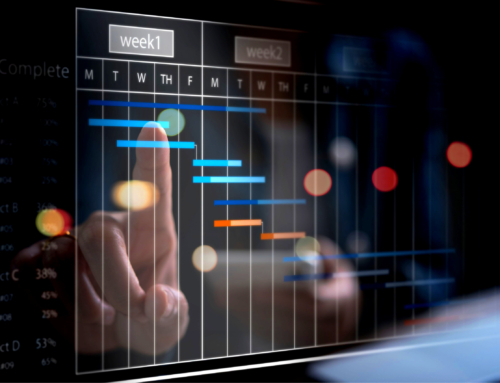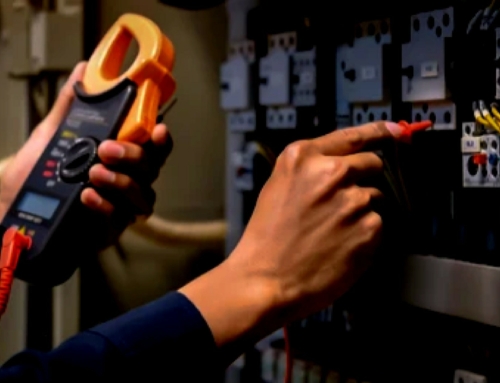From university graduate to Chief Technology Officer, our long-serving employee Nic Grange takes us through his journey at Retriever Communications since joining the company in 2004.
Tell us how you ended up at Retriever and about your first role as a software engineer.
In early 2004, I was just about to graduate from a software engineering degree at UTS and started applying for jobs. I came across a job ad that piqued my interest. It was from Retriever, which was looking for a French-speaking software engineer. I was keen to work in France one day and given my French background I thought I would have a good chance in a small pool of candidates. It turned out the job ad had expired; it was from when Retriever had had an office in Paris in the preceding years. Nonetheless, I interviewed with them, got along well with the hiring manager and was fortunate enough to get hired.
Over the next decade you progressed to senior software manager, working in London, and then engineering manager. Tell us about some of the challenges of those roles?
In 2008, Retriever set up a new office in London after landing a large European customer. I was keen to be part of it. I wanted to experience something new and also wanted the chance to be able to travel around Europe, for work and pleasure, as well as the chance to regularly go and watch my favourite English Premier League team in the flesh. It coincided well as Retriever needed a software engineer to help with the rollout of this customer (and others) and so I was lucky enough to get to do all the things I wanted and more over a two-year period.
The past 10 years have been described as ‘the decade of disruption’; how have technological advancements changed your role, and influenced Retriever’s offering to its customers in this time?
Through its founder Mary Brittain-White, Retriever was ahead of its time in many ways when it formed in 1996 to provide mobile applications for enterprises. At the time, Mary spearheaded the purchase of Apple’s worldwide centre for mobile excellence from Steve Jobs, which was based on the Apple Newton project.
Even when I joined in 2004, I remember having to explain to people what a tablet was. “It’s like a laptop, but without a keyboard…”
At the time, most of our customers were running on chunky rugged devices running Windows Mobile. The release of the iPhone in 2007 and the iPad in 2010 changed everything. Nowadays, most of our customers run smartphones or tablets. The capabilities of those devices are immense compared to back in my early days at Retriever.
The other big change was in customer expectations for enterprise mobile applications. As business users started to utilise consumer applications, they began demanding a lot more from their work applications, which were often just cut down web views of their backend system and were light years behind consumer apps in terms of usability. Retriever has always had a focus on making its mobile applications fit the workflow of the end user instead of the backend system, not the other way round.
Besides smartphones, the other big development in the last 10 to 15 years has been the move to the Cloud. Retriever was ahead of the curve on this as well; it started offering a SaaS (known as ASP at the time) as far back as 2002. Over the years, with the likes of Amazon Web Services, it has made running a cloud offering certainly much easier.
In the early days, it was hard to convince an enterprise to run a core application and its data outside of their premises. These days, thankfully, the conversation is much easier and most, even conservative organisations, accept cloud offerings are the norm.
You have been Retriever’s chief technology officer for the past six years and preside over a critically important area of the business. Tell us about this role, what is on the horizon for Retriever and how this will benefit your current and future clients.
Like the majority of our staff, my previous roles were focused on the near term, like when is the next deliverable or release due. Six years ago, I made the case to our CEO we needed someone focused on the longer-term future.
Platform re-architectures and major technology adoptions take time and that is a large part of my role. I start talking about a technology to people, sometimes through a lunch and learn, then it may be tried out in a prototype for a new project, but it can take a quite a while to fully adopt it and see the benefits.
Also, you can’t change everything at once. You can’t stop all the work that pays the bills to rewrite everything with the latest technology. You have to paint the large picture of where we want to head to, keep communicating it and do it incrementally.
There are so many new technologies that it is hard to work out which ones to pick. I spend a lot of time looking and trying out different ones. Some take off and then disappear while others become mainstream.
Currently the technologies I’m passionate about are microservices and streams processing, augmented reality, machine learning and IoT (Internet of Things).
Some we’ve already incorporated into our software stack while others are still in the prototyping stage. For some of these, like augmented reality, we’ve collaborated with my old university, UTS (University of Technology Sydney) to research, prototype and theorise about what will be possible in three to five years’ time.
What do you love about working at Retriever?
Apart from it being a friendly family-like environment and that I’m constantly learning, the biggest aspect for me is personal autonomy. I think that I’m quite self-motivated and so it’s important to me to have the freedom to work out the best way to solve a problem or achieve an outcome.
Could you tell us something that most people wouldn’t know about you or may be surprised to learn?
Since moving from living in an apartment to a house a couple of years ago, I started gardening and quite enjoy it. I find it relaxing and it helps reduce my screen time. It is also fun with my kids who like to see the earthworms and play with dirt.
What do you like to do in your downtime?
I have two very active kids (five and eight years old) so I try to spend as much time as possible with them when I’m not working. We often play sports or games and also like to learn things together. Quite often they want to know about things that I know very little about, so it gives me the opportunity to learn something new and help to teach them and have a shared interest.





